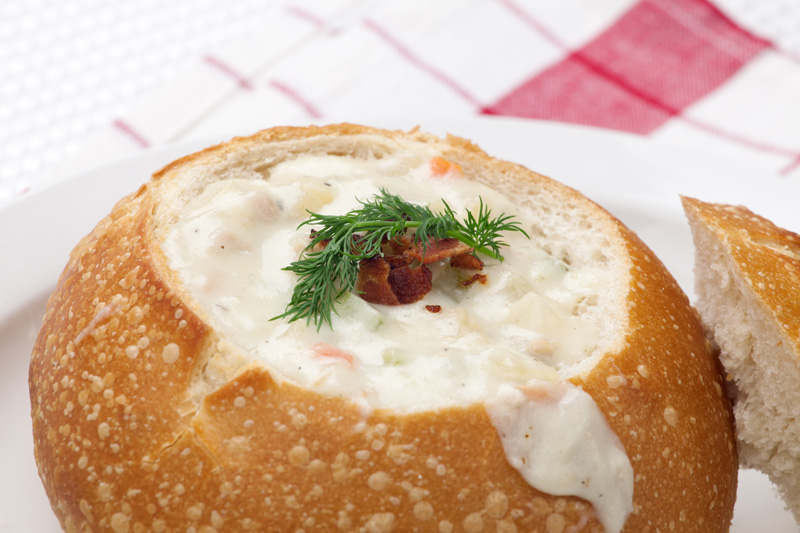According to the food historians, the word chowder “and its application to fisherman’s stew comes from France. Versions of la chaudree, (cauldron) are common along the coast from just north of Bordeaux well up to Brittany…Mrs. Glasse
—Historical notes by Karen Hesse, Mary Randolph’s The Virginia House-wife [University of U South Carolina Press:Columbia] 1984 (pages 265-6).
“Chowder.
A seafood soup associated with New England, the most popular of which is clam chowder. The term may also describe a buttery, hearty soup made with corn, chicken, or other chunks of food still evident in the blend. The origins of the word “chowder” are somewhat obscure, but most authories, including the Dictionary of American Regional English, believes it derives from the French word for a large caldron, chaudiere, in which Breton sailors threw their catch to make a communal stew, a custom carried to Newfoundland, Nova Scotia, and down to New England in the seventeenth and eighteenth centuries…The first American cookbook to give a chowder recipe was the second edition of Amelia Simmons’s American Cookery (1800). It called for bass, salt pork crackers, and a side dish of potatoes…Although by 1836 “clam chowder” was known in Boston, where its associations are still strong, throughout the century chowder was less commonly a dish of clams than of fish, usually cod or haddock, and by the 1840s potatoes had become a traditional ingredient…Chowder was a staple dish of New Englanders, and for sailors merely another another way to make a constant diet of fish palatable…By the end of the century certain New England regions became known for their various interpretations of chowder–one might find cream in one spot, lobsters in others, no potatoes elsewhere–but most were by then a creamy white soup brimming with chopped fish or clams, crackers, and butter…”
—Encyclopedia of American Food and Drink, John F. Mariani [Lebhar-Friedman:New York] 1999 (p. 81-82)


